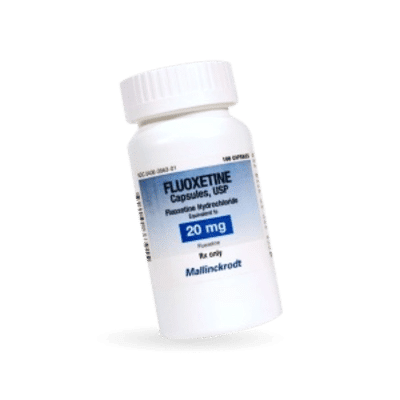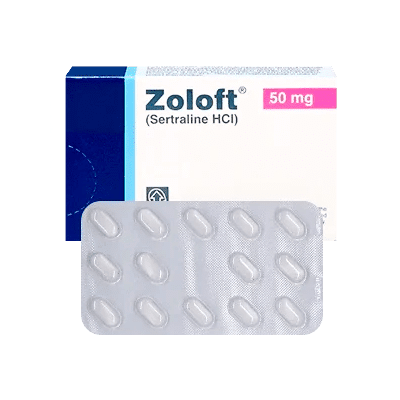I have been taking Fluoxetine for several months now as prescribed by my doctor. At first I had doubts, but after a couple of weeks I noticed improvements – my mood stabilized, anxiety disappeared. There were almost no side effects, only a little dry mouth in the first days.

Fluoxetine
Active ingredients: Fluoxetine- Quality products
- Support 24/7
- Fast delivery
What is it?
Fluoxetine is an antidepressant belonging to the class of selective serotonin reuptake inhibitors (SSRIs). This drug is actively used to treat depression, obsessive-compulsive disorder (OCD), panic attacks and some other conditions associated with psychoemotional imbalance. One of the main mechanisms of its action is to increase the level of serotonin in the brain, which helps improve mood and overall mental state.
Fluoxetine is known for its effectiveness and relative safety, making it one of the most commonly prescribed antidepressants. It usually begins to act 2-4 weeks after the start of treatment, although some patients may need more time to achieve the full therapeutic effect. This drug is also often prescribed for conditions such as bulimia and premenstrual dysphoric disorder (PMDD), which confirms its wide range of applications in psychiatric practice.
Fluoxetine is available as capsules or tablets and is usually taken once a day, usually in the morning. This allows patients to maintain a stable level of the drug in the blood, which helps to even out the effects on mental health without sudden fluctuations. However, before starting treatment, it is necessary to consult a doctor to take into account possible contraindications and to choose the optimal dosage.
Composition
Fluoxetine contains the active substance Fluoxetine hydrochloride, which provides its therapeutic effect. This compound acts on the central nervous system, enhancing the transmission of serotonin, one of the key neurotransmitters responsible for regulating mood and emotions. In addition to the active substance, the drug may contain a number of auxiliary components that ensure stability, bioavailability and ease of use of the dosage form.
Fluoxetine tablets or capsules may contain the following excipients:
- Lactose – to improve the taste and ensure the necessary consistency of the tablets.
- Crospovidone – helps to speed up the dissolution of the tablet in the stomach, promoting rapid absorption of the active substance.
- Talc – used as a non-stick agent in the production of tablets.
- Magnesium stearate – acts as a lubricant, ensuring the uniformity of the mixture and stability of the dosage.
- Titanium dioxide – used as a coating to protect the tablet from external factors such as light and moisture.
These components play an auxiliary role, but their presence is important to ensure the quality and effectiveness of the drug.
How to use?
The use of Fluoxetine should strictly follow the doctors recommendations, as the success of treatment and minimization of the risk of side effects depend on it. Fluoxetine is usually taken orally, once a day, preferably in the morning to avoid possible sleep disturbances. The drug can be taken with or without food, with a sufficient amount of water.
The recommended dosage regimen may vary depending on the patients condition and the purpose of treatment:
- The initial dosage is usually 20 mg per day. This allows the body to gradually adapt to the action of the drug and minimize the risk of side effects.
- If necessary and as prescribed by a doctor, the dosage can be increased to 40 mg per day, and in some cases - up to 60 mg. In this case, the daily dose can be divided into two doses - in the morning and in the evening.
- The duration of treatment is also determined by the doctor and can be several months or more, depending on the individual response to the drug and the specific diagnosis.
It is important not to stop taking Fluoxetine abruptly to avoid withdrawal syndrome. If it becomes necessary to stop treatment, the doctor usually recommends a gradual reduction in dosage.
How does it work?
Fluoxetine works by selectively inhibiting the reuptake of serotonin in the brain. Serotonin is a neurotransmitter that plays a key role in regulating mood, emotions, and overall psychoemotional state. People with depression and other mental disorders often have a serotonin deficiency, which leads to a worsening mood and a reduced ability to cope with everyday stress.
When Fluoxetine blocks the reuptake of serotonin, this leads to an increase in its concentration in the synaptic cleft - the space between nerve cells where nerve impulses are transmitted. Due to this, serotonin activity on nerve cell receptors increases, which helps improve mood, reduce anxiety, and stabilize the psychoemotional state.
The effect of Fluoxetine usually develops gradually. Patients may begin to notice improvements after 1-2 weeks, but the maximum therapeutic effect is most often observed after 4-6 weeks of regular use. Thus, Fluoxetine helps restore the balance of serotonin in the brain, which contributes to long-term improvement in depression and other mental disorders.
Indications
Fluoxetine is widely used in psychiatric practice due to its multifaceted effect on the psycho-emotional state. It is prescribed for various mental and behavioral disorders, where serotonin metabolism disorder plays a key role. The main indications for its use include:
- Depression - both mild and severe, including cases where other treatments have not brought the desired effect.
- Obsessive-compulsive disorder (OCD) - helps reduce obsessive thoughts and compulsive actions, making life easier for patients.
- Panic disorders - helps reduce the frequency and intensity of panic attacks.
- Bulimia - helps control binge eating and helps normalize eating behavior.
- Premenstrual dysphoric disorder (PMDD) - reduces symptoms of irritability, depression and emotional instability associated with premenstrual syndrome.
Fluoxetine can also be used in combination therapy in the treatment of other psychoemotional disorders, if justified by the clinical picture and prescribed by a doctor.
Contraindications
Before starting treatment with Fluoxetine, it is important to read the list of contraindications, as taking the drug may be unsafe for some categories of patients. The drug should not be used in the following cases:
- Hypersensitivity to Fluoxetine or any of the components of the drug. Allergic reactions may manifest as rash, itching, swelling or other symptoms indicating intolerance.
- Concomitant use of monoamine oxidase inhibitors (MAO) - the simultaneous use of these drugs can lead to the development of serotonin syndrome, a life-threatening condition. The interval between taking MAO and Fluoxetine should be at least 14 days.
- Decompensated epilepsy - in patients with uncontrolled seizures, there is a risk of increased seizure activity.
- Severe liver or kidney dysfunction - the metabolism and excretion of Fluoxetine may be impaired, which will lead to the accumulation of the drug in the body and an increased risk of side effects.
- Pregnancy and breastfeeding - taking Fluoxetine during this period can negatively affect the fetus or newborn, so its use is possible only for strict indications and under the supervision of a doctor.
If any of the listed conditions are present, you must consult a doctor to consider alternative treatment options or adjust therapy.
Side effects
Fluoxetine, like any other drug, can cause side effects. Although most patients experience mild or no side effects, some side effects may still occur, especially at the beginning of treatment or when the dosage is increased.
The most common side effects include:
- Nausea and digestive upset - may occur during the first days of taking the drug, but usually pass as the body adapts.
- Insomnia - due to the stimulating effect of Fluoxetine, especially if the drug is taken in the evening. In such cases, it is recommended to transfer the dose to the morning.
- Headaches are common, especially at the beginning of treatment, but most often they disappear after a few days.
- Increased sweating - may occur, especially at night.
- Decreased libido and other sexual dysfunctions - occur in some patients, which may be a reason to stop therapy.
In rare cases, more serious side effects may occur, such as serotonin syndrome, seizures, or severe allergic reactions. If you experience unusual or severe symptoms, it is important to contact your doctor immediately.
Frequently asked questions
Fluoxetine Reviews and Experiences
I couldnt find a suitable antidepressant for a long time, and finally the doctor recommended Fluoxetine. At first there were slight headaches, but they quickly passed. Now I feel much better, I have more energy and a desire to act.
Fluoxetine helped me cope with panic attacks that did not allow me to live in peace. It is easy to take, I did not notice any addiction. The only thing is that it took time to feel the result - the effect became noticeable only after a month.









